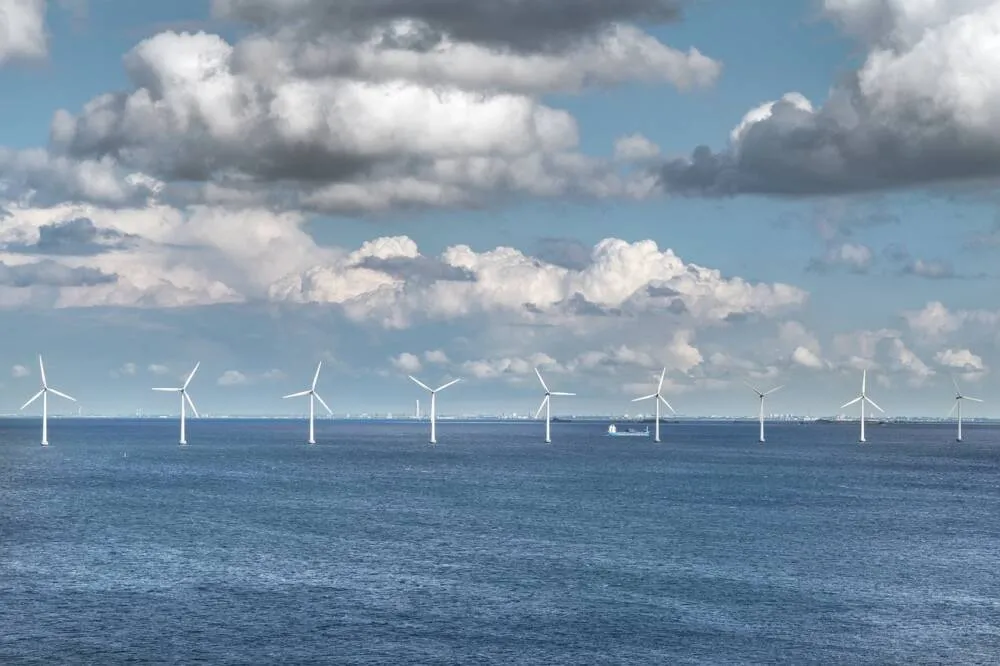widea group guided by NVE identified 20 areas for maritime energy wind, which recommends himself specifically examine. These are the areas that are technically suitable for offshore wind energy i where conflicts of interest are relatively low. In the further process will also be carried out specific impact assessment , aby narrow down even more real problems.
“Together with several DGs and specialist communities, we have identified 20 offshore areas with good wind resources, where conflicts of interest between the environment, fisheries and other industries are relatively low. These are areas along the entire coast, from Skagerak in the south to the Barents Sea in the north. These offshore areas now need to be explored more closely to find those best suited for offshore wind energy, says Kjetil Lund, Norwegian Directorate of Water Resources and Energy.
Wide cooperation
The government has the ambition to prepare land for the development of offshore wind energy with a capacity of 30 GW. Such a development would correspond to almost doubling Norway's energy production. The Ministry of Petroleum and Energy (OED) has asked the Norwegian Water Resources and Energy Directorate (NVE) to recommend which offshore areas may be suitable for wind energy.
Need more knowledge
Areas to be explored further are those considered most suitable for offshore wind. This means that these areas are technically appropriate and have a relatively low level of conflicts of interest. At the same time, conflicts of interest may exist in these areas, for example related to aquaculture, fisheries, environmental interests, oil and shipping. There is therefore a need for more knowledge on specific areas.
Also read: New maps of Norwegian glaciers, very sensitive to climate change
– Today we do not have a final decision on how much and where offshore wind energy will be built. We will need further research on environmental and business interests, but also economic ones, impact on the power system and grid needs. It is conceivable that during this process some areas will be reduced or completely eliminated, says Lund.
All identified areas must undergo a strategic impact assessment prior to any opening and announcement. In addition to maps with 20 areas and descriptions, a group of management has prepared a proposal for a research program which will be sent for consultation. This sets the framework for further research that will provide a better knowledge base. They will also facilitate the selection of the most suitable areas for the development of offshore wind energy. These processes are monitored by the OED.
I did not assess the finances and the need to develop the network
Intensive development of offshore wind energy will have a significant impact on the Norwegian power system. The economic evaluation of offshore wind development was not part of the assignment. The management group also did not assess in detail the need for new internet investments.
– In this work, we did not assess the economics of developing a large part of offshore wind energy. Today, offshore wind energy is not profitable in Norway. Extensive investment in new grids will also be needed if a lot of offshore wind is to be built. This applies to both sea and land, says Lund.
Environmental values and coexistence with other industries - quotes from the management group
An important starting point for the mission was to find areas that both care for important environmental values and ensure good coexistence with other industries.
– Knowledge of seabird use of the coast and the sea has contributed to the fact that the proposed sea breeze areas are located far from the coast. They are therefore at a considerable distance from important seabird colonies. There is a need to significantly increase renewable energy production to meet climate goals. That is why long-term environmental monitoring is so important, so that the development of offshore wind energy and other maritime industries ensures respect for the environment - says Ellen Hambro, director of the Norwegian Environment Agency.
– Most of the 20 areas identified in the report are outside important fishing areas. Also in areas identified as suitable for offshore aquaculture, coexistence may be possible. The main task of the Directorate of Fisheries in finding suitable areas for offshore wind energy was to protect the interests of fisheries and aquaculture as much as possible, while at the same time we must be constructive and contribute to finding good solutions. While the group of directorates collectively supports the recommendation for 19 out of 20 areas, it must be emphasized that we lack knowledge about the impact of offshore wind on aquaculture and fish stocks. Gaining this knowledge is important, says Fisheries Director Frank Bakke-Jensen.
Good management of resources in Norwegian offshore areas
– The competitiveness of maritime transport, the need for safe and efficient transport and the relationship with greenhouse gas emissions from maritime transport were important to the Coastal Administration in the work of the group of directorates. The implications that offshore wind could have for these conditions have been of interest, and the coastal administration has included in the work proposals for adjusting the areas due to traffic patterns, conflict with traffic separation schemes and the need for ship corridors, says Einar Vik Arset.
– The Norwegian Petroleum Directorate is concerned with the good management of Norwegian marine resources and has 50 years of experience in the coexistence of the oil industry and other users of the sea. Early dialogue and coordination between sectors is essential to ensure good coexistence and thus also to limit any conflicts of areas and interests. This means that oil and storage resources must be mapped in the best possible way before offshore wind construction begins, says Torgeir Stordal, Director at the Norwegian Petroleum Directorate.
Like us on Facebook and share our post with others. Thank you.
Source: Norwegian Water Resources and Energy Directorate
Read and learn more: Norway doubles climate funding to NOK 14 billion



